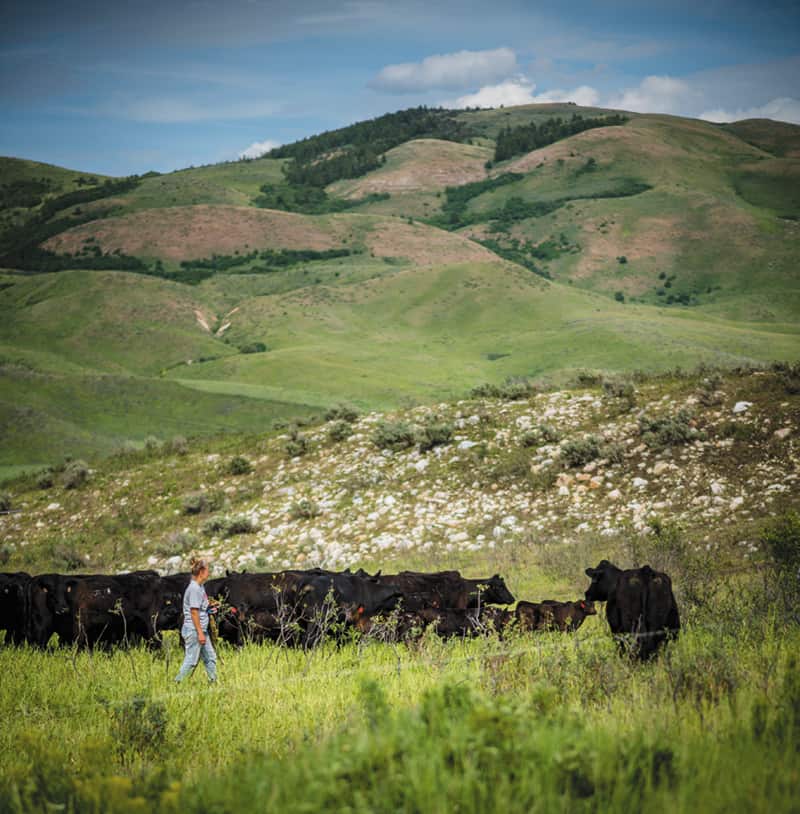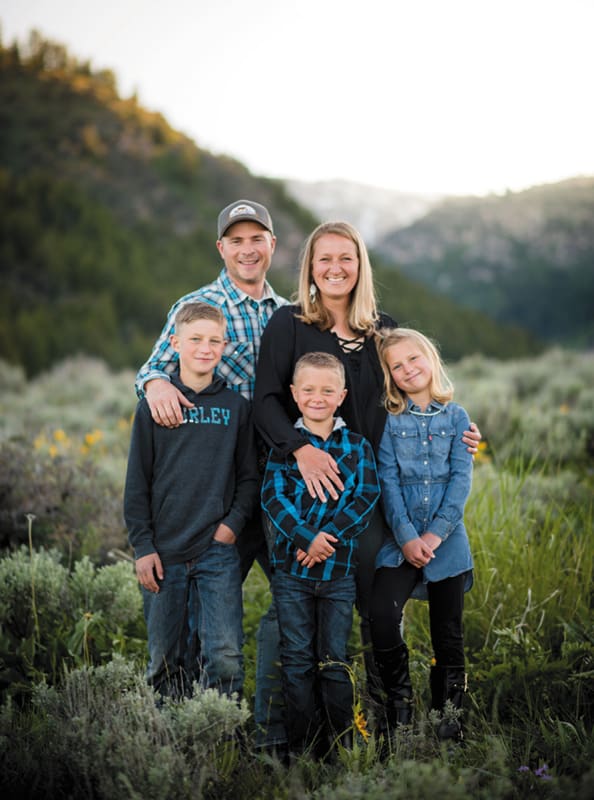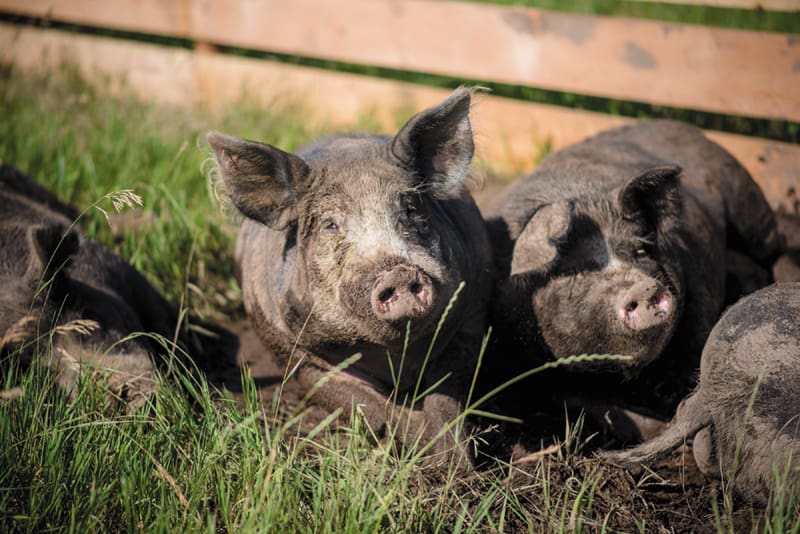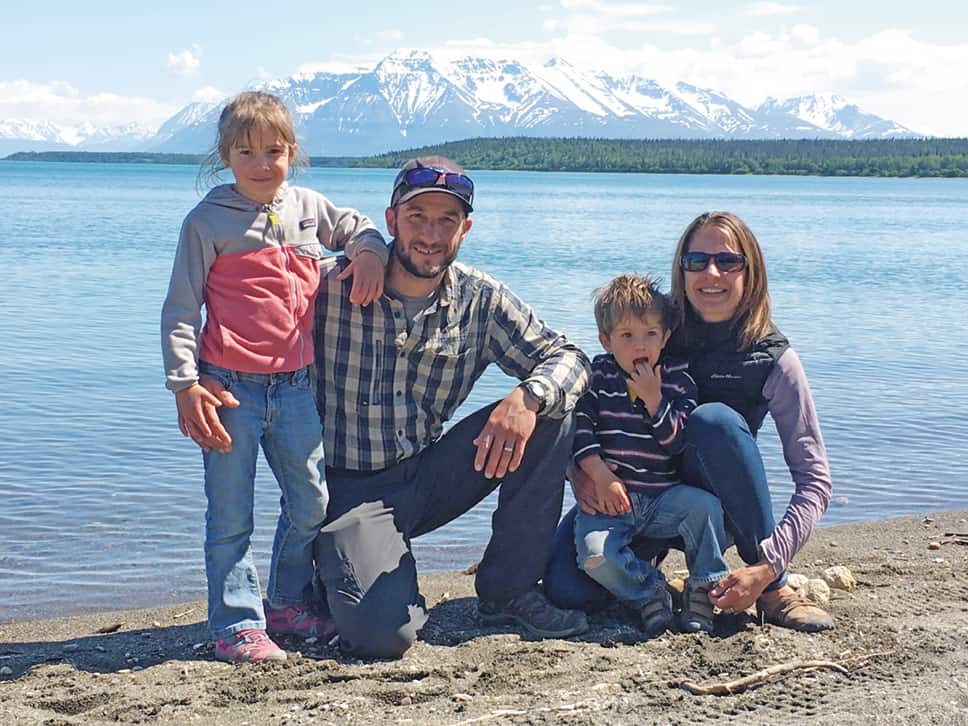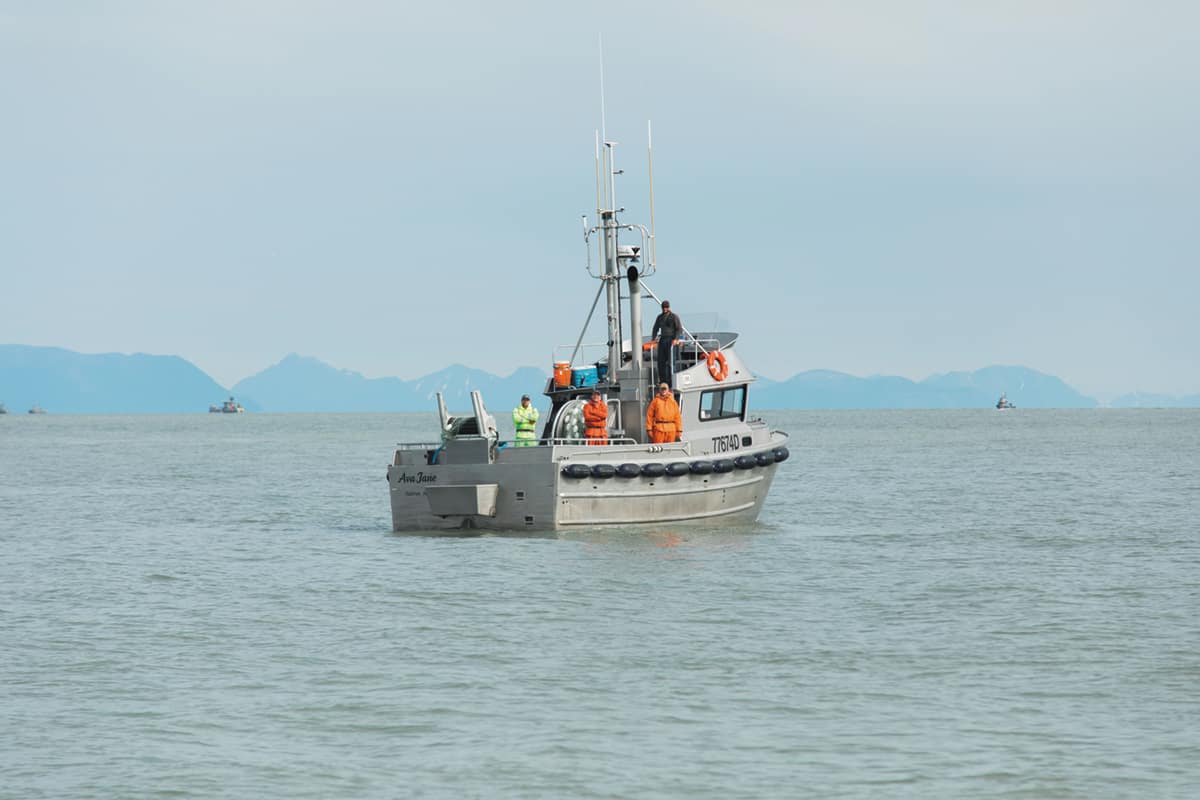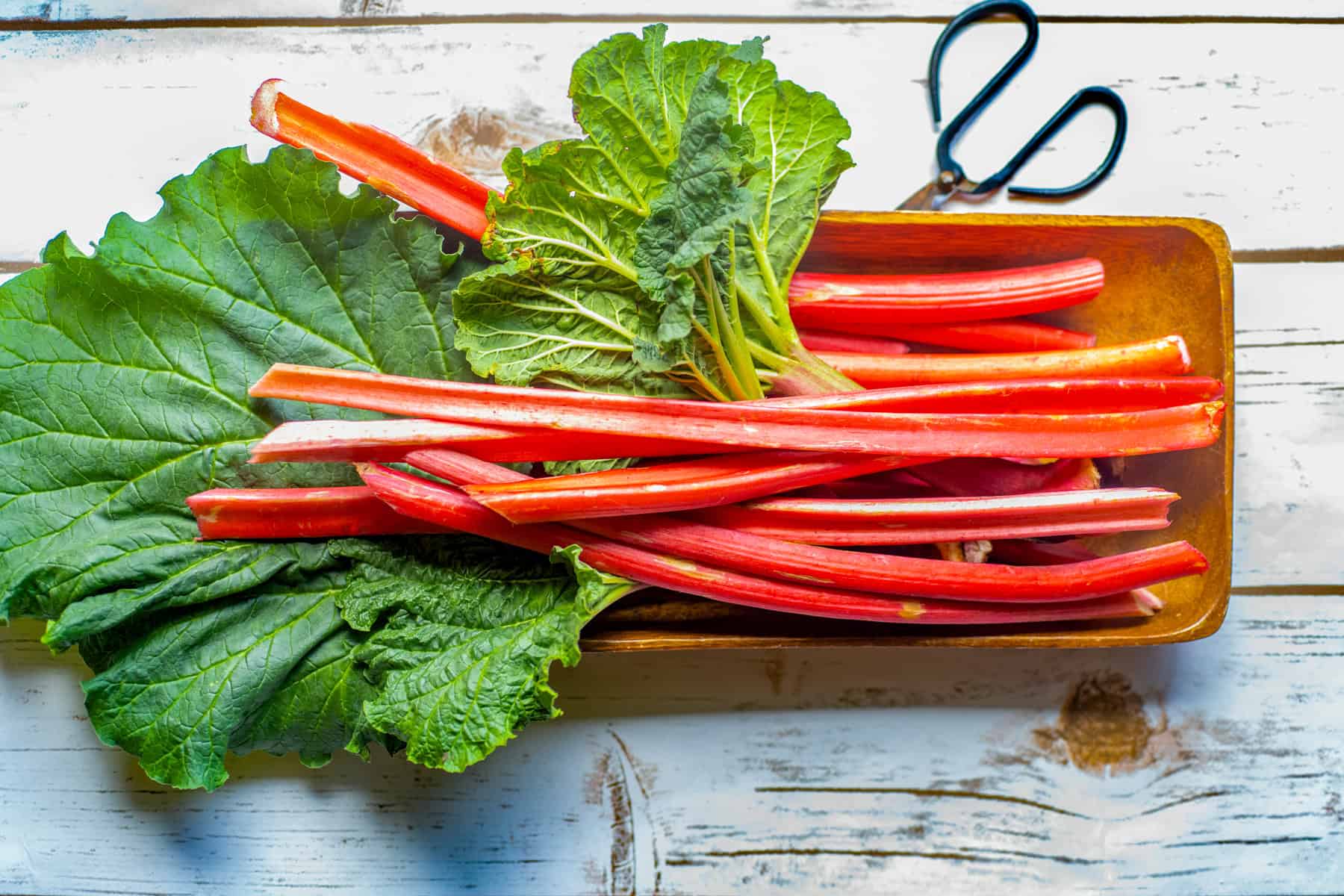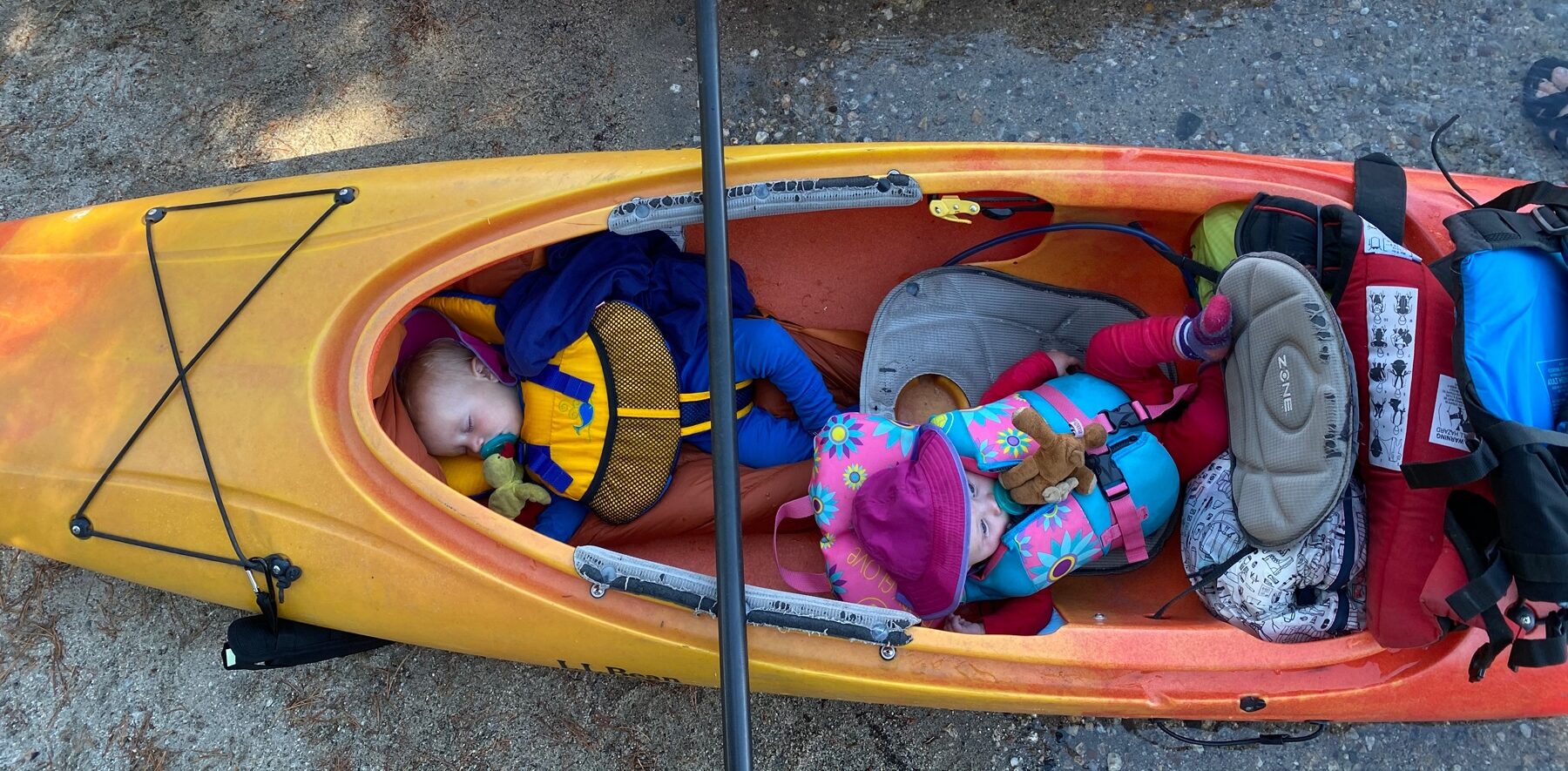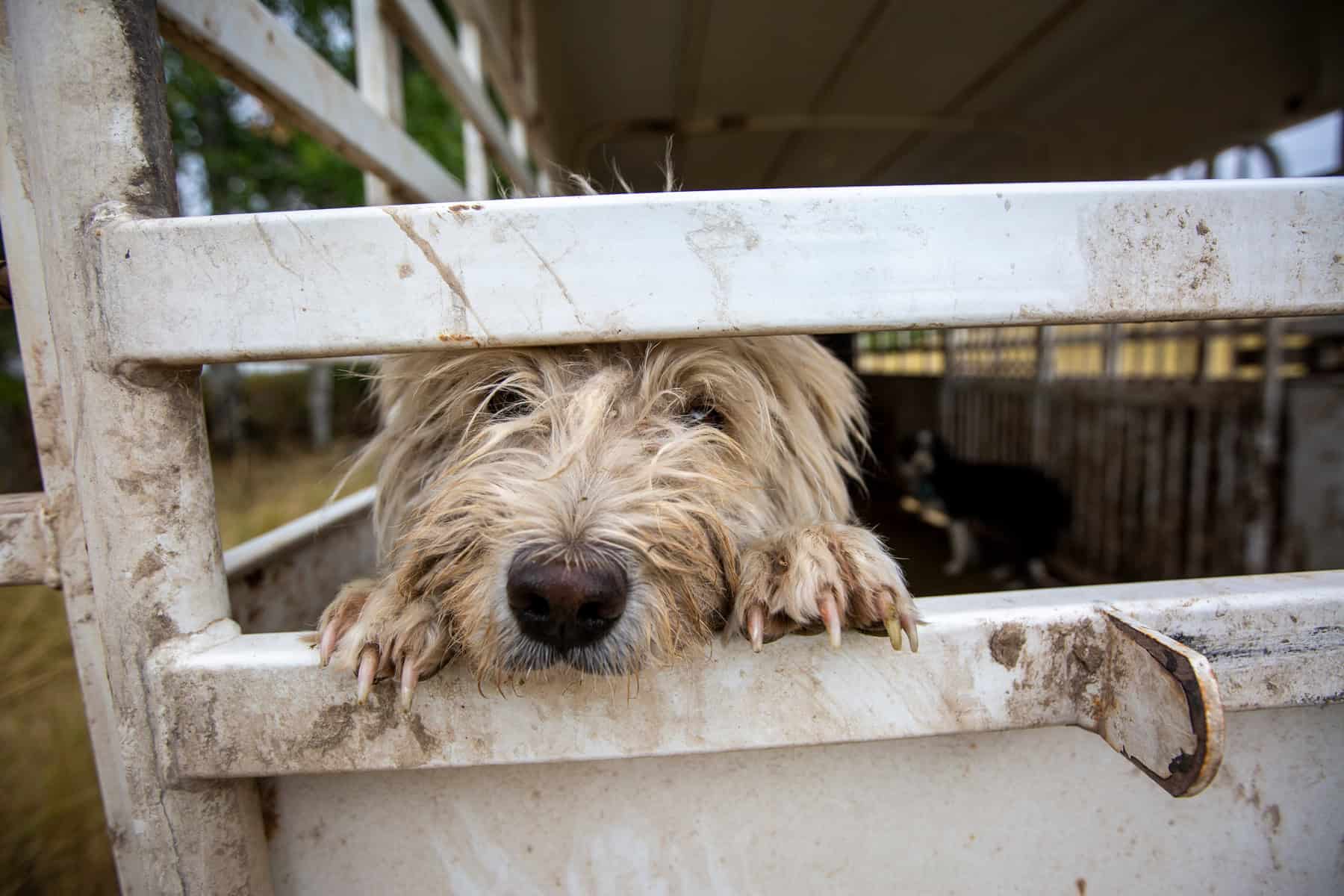By Christina Shepherd McGuire // Photography by contributing photographers
—
For many, knowing where our food comes from is a family priority. With a growing number of dietary sensitives and a focus on family food values, many people now source their sustenance from places other than the grocery store.
Luckily, here in the Tetons, we have a plethora of regional farms and quality food purveyors at our fingertips, making it easy—and even sometimes more economical—to forego factory-farmed meat and farm-raised fish for safer, more nutritious, options.
But in our quest to make sure we’re feeding ourselves food that’s pasture-raised, wild-caught, and pesticide- and hormone-free, how many of us actually consider the ethics of our protein consumption? Honestly, I admit, when I shop for food, moral code is not in the forefront of my mind. Instead, I’m distracted by labels, looking for hidden sugars and additives, and hoping to make my way quickly through the grocery store.
Toxin-Free Turf
It was a personal food sensitivity that led me to Maddox Family Farms’ website. I was searching, midwinter, for a chicken source whose meat was free of the additives store-bought (and even some organic) brands contain. A Malad, Idaho, ranch popped up on my browser, offering pasture-raised beef, pork, and chicken with monthly deliveries to Idaho Falls. So I called.
Thomas Maddox was quick to spend phone time with me, proudly explaining how the farm’s chickens are additive-free and how he and his wife, Aysha, add bentonite clay to all of the animals’ mineral supplements to pull toxins from their systems before slaughter.
“Even though we don’t use chemicals [in production or processing], we don’t know the specifics of our neighbors’ practices,” he explains.
In addition to bentonite supplementation, Maddox Farms also adds apple cider vinegar to the animals’ water in an effort to populate their gut biomes. This practice, consequently, also produces a better quality steak—one that Thomas and Aysha are proud to offer to the public, and one that provides ample nutrients to their three growing children, Oakley, 10, Harlee, 8, and Bentley, 6.
After speaking with Thomas and realizing that his standards of quality matched my expectations, I was sold.
Small Farm. Big Production.
Montana natives, Thomas and Aysha moved their family from Colorado to Malad in 2016 in an effort to start a small sustainable farm. The land they selected, located off of I-15 at the Devil Creek Reservoir exit, was cheap, and the potential market was good, with Pocatello and Idaho Falls close by and Salt Lake City not far to the south.
“We were really interested in regenerative, small-acreage, live-within-your-means-and-don’t-borrow-from-the-government-type of farming,” Thomas says. So Aysha bought him the book You Can Farm: The Entrepreneur’s Guide to Start and Succeed in a Farming Enterprise by Joel Salatin (the only book Thomas claims he has read cover to cover), and they set out to graze 100 cattle on 180 acres, as opposed to the 800 to 1,500 acres a conventional operation needs.
Instead of turning their cows out to selectively graze, the Maddoxes pen them on one acre with electric fence, a concept called “mob stocking.” “When you mob, the cows eat their ice cream [clover and alfalfa], and then they also eat their nutrient-dense spinach and broccoli [plantains and bunch grass], too,” says Thomas. He explains that the same acre will last twenty-four hours before they need to move the herd. It won’t get grazed again for another one hundred days.
The chickens come in three days behind the cows.
“This is when the larvae in the cow manure hatch,” explains Thomas. “The chickens spread the manure to help with fertilization, and they eat all the bugs and larvae, too. And since the cows have now moved to fresh ground, they aren’t standing in their own manure, so they don’t sicken as easily.”
Additionally, the Maddoxes pasture their pigs, an uncommon farming practice. “People don‘t realize that pigs can eat grass,” says Thomas. “It’s actually fun to see pigs running through four-foot-tall grass.”
Thomas explains that, due to pigs’ destructive nature, they pasture them on a separate plot, keeping them there for seven to fourteen days. “We properly ‘massage the soil’ by moving the pigs at the right time, and then the grass comes back just perfect,” he says. The pigs, cows, and chickens all help rejuvenate the grass and soil with their manure loads, complete with beneficial bacteria.
Going the Extra Mile
Cows retain only 7% of the protein in the dead grasses they typically feed on throughout the winter. Thomas and Aysha have a solution for that, too. To prevent nutrient loss, the couple use a working fodder machine that grows 1,300 pounds of live grasses each day during the winter. This climate-controlled greenhouse—complete with an automated sprinkling system—grows grass from seed in about six days. The fodder, which is fed to all of the farm’s animals, allows them to access an estimated 87% of its protein.
The Maddoxes process their own chickens by hand, on site, in their state-inspected facility (a practice that drew me to them in the first place). After processing, each chicken is placed in an ice bath and then frozen for distribution. Their beef, pork, and lamb are processed in a USDA-inspected facility where they make sure no nitrates, nitrites, or MSGs are used in any of the processes or seasonings.
The farm offers beef, pork, and chicken. (Its Italian pork sausage rivals the links my parents buy in the Italian section of the Bronx.) It also offers lamb, chicken eggs, and duck eggs, as well as raw milk and kefir.
Maddox Family Farms delivers to Pocatello and Idaho Falls once a week, and comes to Driggs and Victor every month through December. Orders can be placed at maddoxfamilyfarms.com.
Salmon for a Cause
When Matt Luck, the founder of Pride of Bristol Bay—a direct-to-consumer sockeye salmon provider—passed the proverbial business “torch” to Bristol Bay fisherman Steve Kurian, he did so because they both recognize the importance of advocating for a precious resource. “We share the commonalities of what fishing means to our family and what Bristol Bay represents as a place,” explains Luck, “It’s very special.”
Born in Boston, Luck first fished Bristol Bay, Alaska—the eastern-most arm of the Bering Sea—in 1979 as a crewman. In 1993, he bought his own commercial fishing boat and started his direct-to-consumer company six years ago, one that, he explains, was “very much a personal endeavor.”
“It was important to create messaging around the company that made people aware of Bristol Bay and the unique resource,” he says. “So many fisheries in Alaska have been impacted by climate issues, ocean issues, and management changes. Bristol Bay is home to one of the world’s most pristine, robust, and remote fisheries habitats … and it remains that way today. Making people aware of this and supporting the resource was my passion project, in addition to a business.”
Similarly, Kurian started small—commercial fishing as a net-setter on the Naknek River in 2002 after obtaining his forestry degree from Penn State University. That season, he filleted three coolers of salmon to take home for his family’s winter supply. He was then talked into selling the fillets at a local farmers market. Soon after, he and his wife, Jenn, started Wild For Salmon, a foodie-focused distribution company offering wild Alaska salmon, whitefish, crab, scallops, and other seafood products.
But Kurian was searching for a way to give back. So he partnered with his good friend Luck to take over his efforts. “I used to think, ‘We pay for the management, so we can utilize the resource,’ ” Kurian says. “But we have to take it one step further and advocate to protect it. Just paying for it is not going to guarantee that the fishery is going to be there 20 years from now.”
Sustainability Starts Upstream
Pride of Bristol Bay devotes 1% of its sales to Trout Unlimited Alaska, specifically to its “Save Bristol Bay” project. Luck and Kurian explain that it’s not the resource that needs protection right now, as the fishery had its largest return last year, yielding 63 million sockeye salmon. But the habitat is being threatened by the proposed Pebble Mine upriver, which, as the biggest open-pit gold and copper mine in North America, would damage sockeye spawning grounds.
“Salmon is a huge economic driver [in Alaska],” says Luck, “And the state’s built a system that puts fish first, as the Fish and Game Department sets appropriate harvest levels so there are enough fish to make it to the spawning grounds.”
But on the global level, politics runs the show. And if the spawning grounds aren’t healthy—due to the toxic backlash of mine seepage into the water table—or if the earthen dam holding back millions of cubic feet of toxic water fails, Bristol Bay’s remarkable coldwater fisheries habitat will bear the brunt of the consequence.
Trout Unlimited is a major driver for stakeholders and has generated millions of comments against the mine. Luck explains the advocacy group and their backers are “dedicated to not letting their guard down one bit.”
Quality Connects Communities
The sockeye salmon season runs from June 15 through the end of July in Bristol Bay. Due to huge 22-foot tide variations, the fisherman fish with gill nets on a drift. Each boat incorporates an RSW (refrigerated sea water) system that chills the fish to 33 degrees Fahrenheit at the point of harvest.
Fish are caught, immediately bled—assuring a fresher flavor and longer shelf life—and gently handled to avoid damaging the meat. When the fish are delivered to the quality-control point, a technician takes a core-temperature sample to ensure a 37-degree temperature or less and confirms the fish has been bled via broken gill plates. Only after this are the fisherman paid a premium price for their catch.
“By the time the fish is filleted, it is in pristine condition—just-off-the-boat quality,” Kurian says.
Pride of Bristol Bay offers sockeye deliveries nationwide, with seasonal bulk drops in both Jackson Hole and Sun Valley. “Most mountain towns are starving for great fish at a good quality,” says Luck. “Sockeye salmon is one of the cleanest proteins left on Earth, and it works well for people interested in buying a case of it.”
He says that organizations like Slow Foods of the Tetons recognize the local pool of consumers who want to make a connection with the producer. “You can see Alaska sockeye salmon in the grocery store, but that’s all you know about it. You don’t know who fished it, how they fished it, or the history of the place,” he says. “Even though it was harvested 3,000 miles away, making this connection is a really important part of the local food system.”
Kurian and Luck also recognize the importance of meeting the fishermen and making personal connections. That’s why, for the second year in a row, the fishermen will be participating in a Slow Foods fundraiser at the Jackson Hole People’s Market on September 4, a date that precedes their September 20 grilling event and their September 21 buying club pickup at Jackson Whole Grocer. Salmon can be ordered by the case at prideofbristolbay.com and frozen for up to one year.
Now I realize that food consumption is not just about sourcing what’s healthy. It’s also about making sure the resources will continue to thrive for our children. As a girl who has lived her adult life in the mountains but grew up near the sea, I want my kids to continue to experience vast landscapes full of thriving, green fields as well as the deep blue waters of our oceans. Educating them further about where their food comes from, and not just what’s in it, helps them establish a relationship to the means—one that extends well beyond what goes into their tummies.


